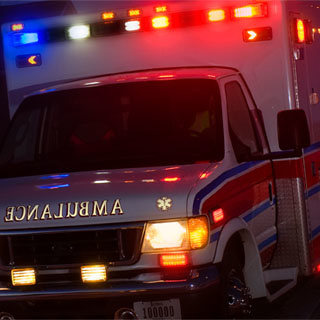A smart phone app being developed at the University of Iowa may one day help save lives.

That’s the word from a team of researchers who are developing an app that would send photos from the scene of a motor vehicle crash and emergency medical services (EMS) to providers at hospital emergency rooms long before the victims arrive at the hospital.
Alerting hospital staff early about a crash has several advantages. It can improve triage and transportation of the victims, assist the trauma center staff in better predicting injuries and treatment options, and even coordinate giving aid remotely, according to Daniel V. McGehee, project principal investigator and director of the Human Factors and Vehicle Safety Research Division at the UI Public Policy Center.
“This is the first time we are integrating vehicle crush imagery from the field into the emergency room,” says McGehee, also adjunct professor of mechanical and industrial engineering in the UI College of Engineering. “Based upon how a vehicle is crumpled, we can begin to predict what the injuries might be to the crash victims.
“For example, for a car sustaining a severe low side impact, the probability of the driver sustaining a pelvic fracture is very high,” he adds.
The goal of the project is to help law enforcement and first responders to collect a half-dozen photos of the crashed vehicle, then automatically send the photos to hospital emergency personnel within 30 seconds.
At present, hospital trauma teams often learn that patients are in transit to the hospital only minutes before arrival, and information may or may not be exchanged between the medical team and the busy paramedic team.
“Such carefully taken photos will help our trauma team develop a mental model of how and what injuries may have occurred,” says Chris Buresh, associate professor of emergency medicine at the UI Roy J. and Lucille A. Carver College of Medicine.
McGehee notes that previous work in the area of photographic crash documentation has focused on demonstrating the concept among field emergency medical technicians communicating with a trauma room. However, he adds, Iowa law enforcement, fire, and first responders may also be able to provide such crash information.
He adds that unlike previous, similar studies that focused on information technology, the current project develops on-the-scene training for recording photographic evidence and training of emergency personnel in how to interpret the information collected.
A key part of the project is that it doesn’t merely send photos; it allows trained professionals to assess patterns of injury based upon crush and intrusion patterns of the damaged vehicle, he says.
McGehee’s colleagues on the project are Nate Scadlock, a trauma nurse in the Department of Emergency Medicine and doctoral student in the UI College of Nursing; Buresh, also medical director of the Keokuk County ambulance service; Corrine Peek-Asa, professor of occupational and environmental health in the UI College of Public Health and director of the federal Centers for Disease Control-funded UI Injury Prevention Research Center; Robert Kaufman, an automotive traumatologist at the University of Washington, Seattle, Harborview Injury Prevention and Research Center; and Denise Szecsei, a computer scientist and app developer at ModNAR Enterprises and lecturer in iPhone app development in the Department of Computer Science, UI College of Liberal Arts and Sciences.
The project is funded in part by the Iowa Department of Transportation.